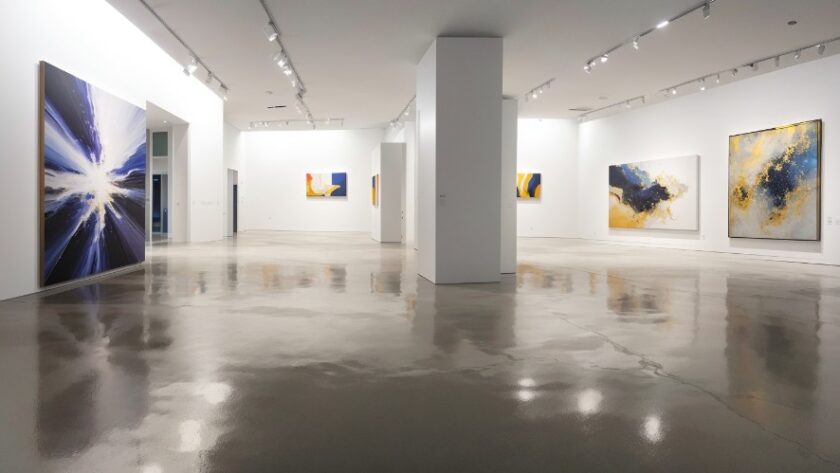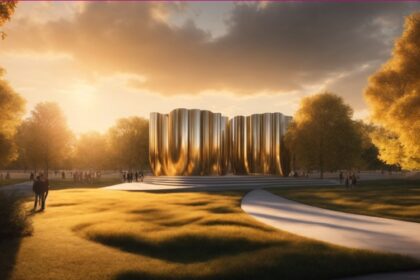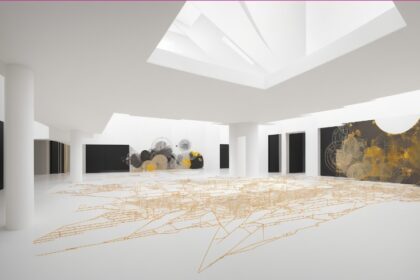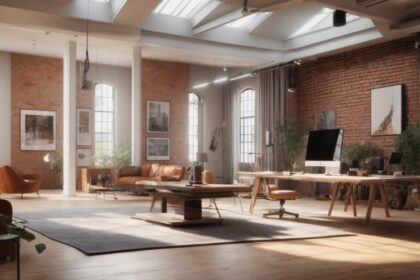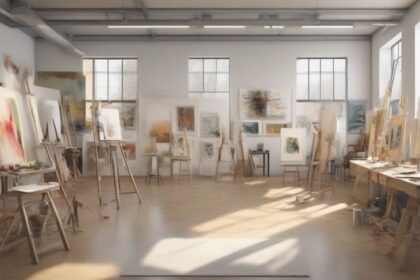In the ever-evolving landscape of artistic expression, 3D visualization has emerged as a revolutionary force, transforming the way artists conceptualize, develop, and present their projects. This powerful tool has become indispensable for breathing life into creative visions, offering unprecedented levels of detail, flexibility, and immersion. As we delve into the multifaceted world of 3D visualization in art, we’ll explore its profound impact on the creative process, its applications across various artistic disciplines, and the cutting-edge technologies driving its evolution.
The Evolution of Artistic Visualization
Throughout history, artists have sought ways to bring their ideas to life before committing them to canvas, stone, or other physical media. From Leonardo da Vinci’s intricate sketches to the maquettes of sculptors, the desire to visualize and refine concepts has been a constant in the artistic journey. However, the advent of 3D visualization has catapulted this process into a new realm of possibility.
The roots of 3D visualization in art can be traced back to the 1960s, with the pioneering work of computer scientists like Ivan Sutherland. His Sketchpad program, developed in 1963, laid the groundwork for computer-aided design (CAD) and 3D modeling. Over the decades, as computing power increased exponentially, so did the capabilities of 3D visualization software.
By the 1990s, 3D visualization had begun to make significant inroads in industries like architecture and product design. However, its adoption in the fine arts was initially slower, hampered by high costs and technical barriers. The turn of the millennium marked a turning point, as more accessible software and hardware democratized 3D technologies, placing powerful tools in the hands of artists across disciplines.
The Transformative Power of 3D Visualization in Art
Today, 3D visualization has become an integral part of the artistic toolkit, offering a plethora of advantages that were once unimaginable. Let’s examine some of the key ways in which this technology is revolutionizing art projects:
- Unparalleled Conceptualization
3D visualization allows artists to externalize their ideas with unprecedented clarity and detail. Unlike traditional sketches or physical models, 3D renders can be manipulated in real-time, offering a 360-degree view of the artwork from any angle. This level of interaction enables artists to explore variations and refinements with ease, fostering a more iterative and exploratory creative process.
For instance, a sculptor working on a large-scale public installation can use 3D visualization to experiment with different forms, scales, and placements within the intended space. This capability not only enhances the artist’s ability to refine their vision but also facilitates more effective communication with clients, collaborators, and fabricators.
- Enhanced Spatial Understanding
One of the most significant advantages of 3D visualization is its ability to provide a true sense of scale and spatial relationships. This is particularly crucial for installation artists, environmental sculptors, and those working on site-specific projects. By creating virtual environments that accurately represent the physical space, artists can better understand how their work will interact with its surroundings.
A striking example of this application can be found in the work of Japanese artist Yayoi Kusama. Her immersive installations, such as the “Infinity Mirror Rooms,” benefit greatly from 3D pre-visualization. By modeling these complex, reflective environments digitally, Kusama and her team can precisely plan the placement of elements to achieve the desired optical effects, ensuring the final installation delivers the intended experience.
- Material Exploration and Texture Mapping
3D visualization software offers sophisticated material libraries and texture mapping capabilities, allowing artists to experiment with different surface treatments, colors, and finishes without the need for physical samples. This feature is particularly valuable for artists working in mediums like sculpture, ceramics, or mixed media, where material choices can significantly impact the final artwork.
Consider the intricate textile sculptures of Nick Cave. Using 3D visualization, Cave can explore countless combinations of fabrics, patterns, and embellishments before committing to the labor-intensive process of constructing his Soundsuits. This digital experimentation not only saves time and resources but also opens up new creative possibilities that might not have been apparent through traditional methods.
- Lighting and Environmental Simulation
Lighting plays a crucial role in how artworks are perceived, and 3D visualization excels in simulating various lighting conditions. Artists can experiment with different lighting setups, from natural daylight to complex artificial arrangements, to understand how their work will appear in various environments.
This capability is especially valuable for artists creating light-based installations or working with reflective materials. For example, the luminous sculptures of James Turrell benefit immensely from 3D pre-visualization. By accurately modeling the interaction of light with space and materials, Turrell can fine-tune his designs to achieve the precise perceptual effects he seeks, long before physical construction begins.
- Collaborative Potential and Remote Work
In an increasingly globalized art world, 3D visualization facilitates collaboration across distances. Artists can share their 3D models with colleagues, curators, or clients anywhere in the world, allowing for real-time feedback and adjustments. This has become particularly relevant in the wake of global events that have limited physical travel and in-person meetings.
The collaborative potential of 3D visualization is exemplified by large-scale public art projects. For instance, the creation of Chicago’s iconic Cloud Gate sculpture (colloquially known as “The Bean”) by Anish Kapoor involved extensive use of 3D modeling. This allowed the artist to work closely with engineers and fabricators across multiple countries, ensuring that the complex, reflective surface could be accurately realized despite the challenges of its scale and form.
Innovative Applications Across Artistic Disciplines
While 3D visualization has found applications across the art world, its impact is particularly pronounced in certain disciplines:
Digital Sculpture and 3D Printing
The marriage of 3D visualization with 3D printing technologies has given rise to a new form of sculptural practice. Artists can now create intricate forms that would be impossible to achieve through traditional methods, pushing the boundaries of what’s physically possible.
One pioneering figure in this field is Joshua Harker, whose intricate 3D-printed sculptures blur the line between digital and physical art. Harker’s work, characterized by complex lattices and organic forms, begins as 3D visualizations that are then brought to life through additive manufacturing. This process allows for the creation of sculptures with internal structures and negative spaces that defy traditional fabrication methods.
The impact of 3D visualization and printing on sculpture extends beyond the realm of fine art. In 2019, the restoration of Notre-Dame Cathedral in Paris after a devastating fire was aided by 3D scanning and visualization technologies. These tools allowed conservators to create precise digital models of damaged architectural elements, facilitating the accurate recreation of centuries-old craftsmanship.
Virtual and Augmented Reality Art
The rise of virtual and augmented reality technologies has opened up entirely new avenues for artistic expression, with 3D visualization at their core. Artists are creating immersive experiences that transport viewers into fully realized digital worlds or overlay digital elements onto physical spaces.
One groundbreaking example is the work of artist Zach Lieberman, who uses augmented reality to create interactive, site-specific installations. His project “Reflection Studies” uses 3D visualization and AR technology to transform public spaces into dynamic, ever-changing canvases. Viewers can use their smartphones to see virtual reflections and distortions superimposed on their surroundings, creating a unique blend of digital and physical realities.
In the realm of virtual reality, artists like Rachel Rossin are pushing the boundaries of what’s possible in digital space. Rossin’s VR paintings and installations, such as “The Sky Is a Gap,” begin as complex 3D visualizations that are then translated into immersive environments. These works challenge traditional notions of painting and sculpture, allowing viewers to step inside and interact with the artwork in unprecedented ways.
Architectural Visualization and Environmental Art
While architectural visualization has long been a staple of the construction industry, artists are increasingly using these tools to create speculative works that blur the line between art and architecture. These projects often explore themes of utopia, dystopia, or alternative social structures through imagined built environments.
Artist and architect Liam Young exemplifies this approach with his “speculative cinema” projects. Young uses advanced 3D visualization techniques to create entire fictional cities, which serve as the backdrop for narratives exploring the impact of technology on urban life. His work “Planet City” imagines a future where the entire global population lives in a single, hyper-dense metropolis, leaving the rest of the Earth to rewild. This project, realized through stunning 3D visualizations, serves as a provocative thought experiment on sustainability and urban planning.
The Technical Landscape: Tools and Techniques
The field of 3D visualization for art is supported by a robust ecosystem of software and hardware tools. While the specific needs may vary depending on the artist’s discipline and project requirements, some key technologies have emerged as industry standards:
Modeling and Sculpting Software
Programs like Autodesk Maya, Blender, and ZBrush have become go-to tools for artists creating 3D models. These software packages offer a range of modeling techniques, from polygon-based construction to digital sculpting, allowing artists to create everything from precise geometric forms to organic, textured surfaces.
The learning curve for these tools can be steep, but the payoff is significant. For example, digital sculptor Janne Kyttanen used ZBrush to create his “Metsidian” collection, a series of 3D-printed objects that combine natural forms with precise geometries. The software’s ability to handle complex, high-resolution models was crucial in realizing Kyttanen’s intricate designs.
Rendering Engines
Once a 3D model is created, rendering engines like V-Ray, Arnold, or Octane are used to generate photorealistic images or animations. These tools simulate the behavior of light, materials, and atmospheric effects with incredible accuracy, allowing artists to create stunningly lifelike visualizations of their work.
The power of modern rendering engines is exemplified in the work of digital artist Beeple (Mike Winkelmann), whose daily render project showcased the evolving capabilities of 3D visualization over the course of 13 years. Beeple’s surreal, highly detailed scenes push the boundaries of what’s possible with current rendering technology, often blurring the line between digital art and photorealism.
Virtual and Augmented Reality Development Platforms
For artists working in VR and AR, platforms like Unity and Unreal Engine provide powerful tools for creating interactive, immersive experiences. These game engines have been repurposed for artistic applications, offering a blend of visual fidelity and real-time interactivity.
The potential of these platforms is showcased in projects like “Mutator VR” by William Latham and Stephen Todd. This generative art installation uses real-time 3D graphics to create evolving, abstract forms that viewers can interact with in virtual reality. The use of game engine technology allows for complex calculations and renderings to occur in real-time, creating a truly responsive and immersive artistic experience.
Looking Ahead: The Future of 3D Visualization in Art
As we look to the future, several emerging trends promise to further revolutionize the role of 3D visualization in art:
AI-Assisted Creation
Artificial intelligence and machine learning algorithms are increasingly being integrated into 3D visualization workflows. These tools can assist artists in generating complex forms, textures, and even entire scenes based on input parameters or style transfer from existing artworks.
For instance, the “Artificial Nature” project by artist Jon McCormack uses evolutionary algorithms to generate 3D-printed sculptures that mimic organic growth patterns. This fusion of AI and 3D visualization points to a future where the boundaries between human and machine creativity become increasingly blurred.
Real-Time Ray Tracing
Advancements in graphics processing technology are making real-time ray tracing a reality. This technique, which simulates the physical behavior of light with unprecedented accuracy, promises to bring a new level of realism to 3D visualizations, particularly in interactive and VR environments.
Haptic Feedback and Multisensory Experiences
The integration of haptic feedback technologies with 3D visualization promises to add a tactile dimension to digital art experiences. Artists are beginning to explore how touch, smell, and even taste can be incorporated into their digital creations, creating truly multisensory artworks.
Nano-Scale Visualization and Fabrication
As 3D visualization and printing technologies advance to the nano-scale, artists are gaining the ability to create and manipulate structures at a molecular level. This opens up entirely new artistic possibilities, blurring the lines between art, science, and technology.
Conclusion: A New Artistic Paradigm
The integration of 3D visualization into the artistic process represents more than just a technological advancement; it signifies a fundamental shift in how we conceive of and interact with art. By providing tools that expand the boundaries of what’s creatively and physically possible, 3D visualization is ushering in a new era of artistic expression.
As we’ve explored, this technology is not only enhancing traditional artistic practices but also giving rise to entirely new forms of art. From digital sculptures that defy the laws of physics to immersive virtual reality experiences that transport viewers to impossible worlds, 3D visualization is redefining what it means to create and experience art.
Yet, as with any transformative technology, the true power of 3D visualization lies not in the tools themselves, but in the hands of the artists who wield them. As these technologies continue to evolve and become more accessible, we can expect to see an explosion of creativity, with artists pushing the boundaries of what’s possible in ways we can scarcely imagine today.
In this new artistic landscape, the ability to visualize and iterate on ideas with unprecedented speed and detail is not just a convenience—it’s becoming essential for bringing ambitious art projects to life. As we look to the future, it’s clear that 3D visualization will play an increasingly central role in shaping the art of tomorrow, opening up new realms of possibility and pushing the boundaries of human creativity.
